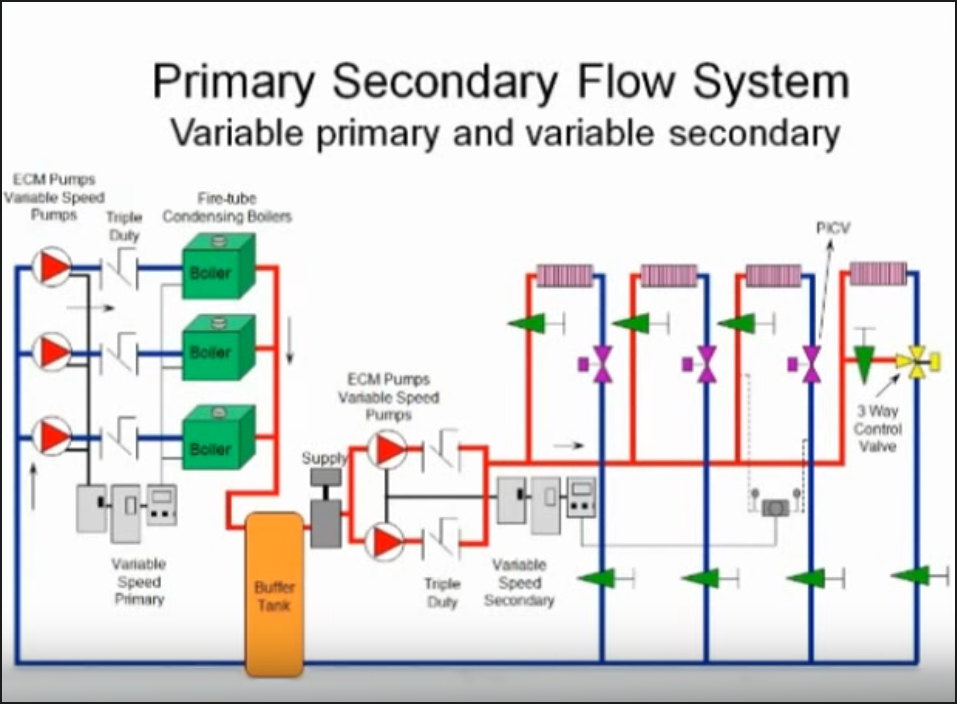We like to vary flow through our hydronic systems, don’t we? After all, less flow equals less pump energy. But when it comes to cooling tower performance and longevity, just be careful not to overflow or underflow the tower. Either scenario can lead to some pretty costly problems.
Read MoreCooling towers are one of the most effective strategies for reduction of cooling load – at least as long as you don’t invade their personal space. Cooling towers are far more likely to do their thing and do it well when they’ve got some room to breathe, preferably with an unobstructed view. Bad things happen when you crowd a cooling tower with walls or solid enclosures....
Read MoreLast time we talked about the impact that the wet bulb temperature has on cooling tower performance. In summary, it’s harder to evaporate water into air that’s already wet. (I.e. The higher the wet bulb, the harder a cooling tower has to work to evaporate enough water to maintain set points.) In this blog, we’re going to define what those set points are, how cooling towers are rated, and finally how these factors impact the cooling tower size and operation for a given application.
Read MoreHow do you evaluate the performance of a cooling tower? What factors impact how effective a cooling tower will be in a given application? To get to the bottom of either of these questions – which are essential questions to ask when sizing a cooling tower – it’s important to understand the impact of the ambient wet bulb temperature on cooling tower performance.
Read MoreCooling towers are simple mechanisms. Their operation is based on the natural occurrence of evaporative cooling – something most of us have experienced daily since the first time we got wet and felt a chill. But despite their simplicity, cooling towers play a crucial role in operational efficiency of the entire chilled water system. Not only are they the exit point for all those BTUs in a building that the chilled water system is working so hard to absorb and eliminate, their operation has the potential to significantly reduce the amount kWs going to the biggest energy hog in our system—the chiller.
Read MoreJMP Equipment Company
Search
Series
Check Out Our Videos!
Get Updates from Us
Visit our Contact Page and let us know what information you'd like to receive.
Contact About Videos Sign Me Up
Powered by Squarespace


